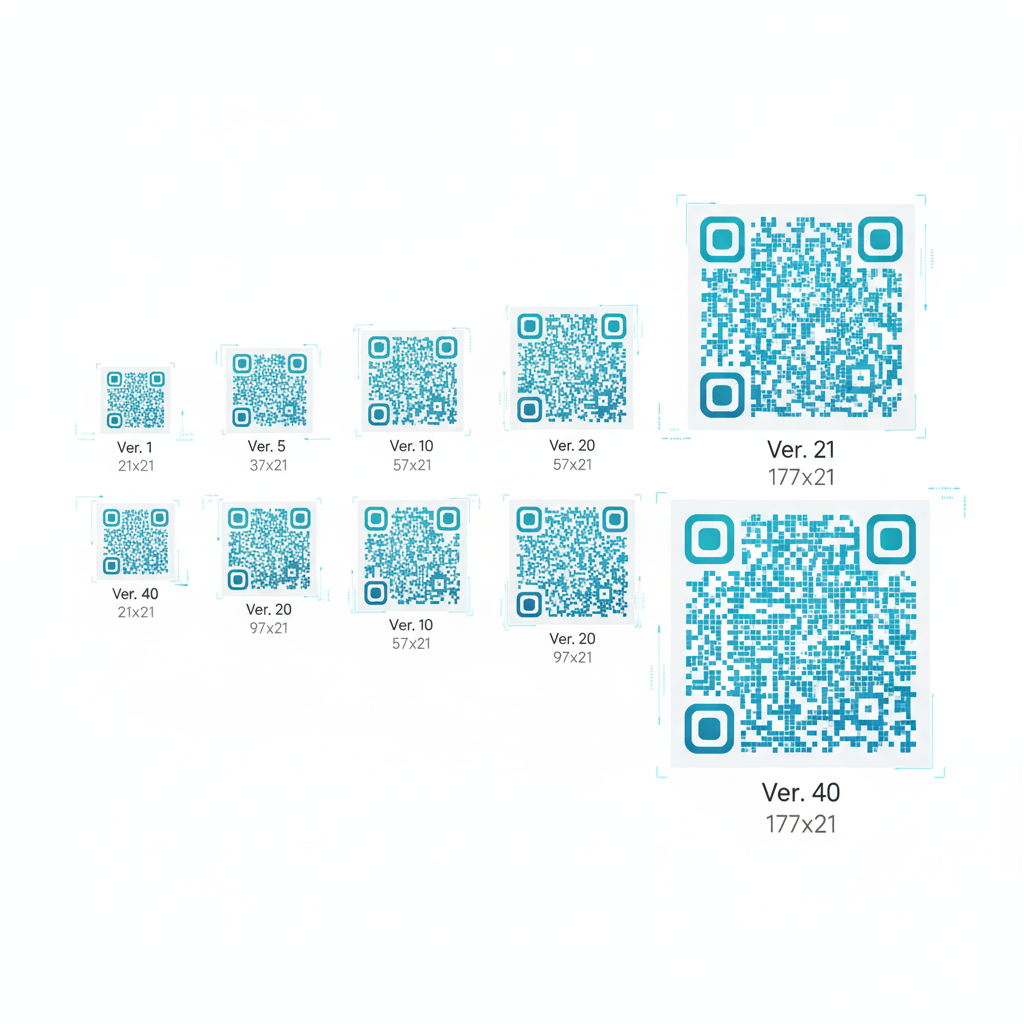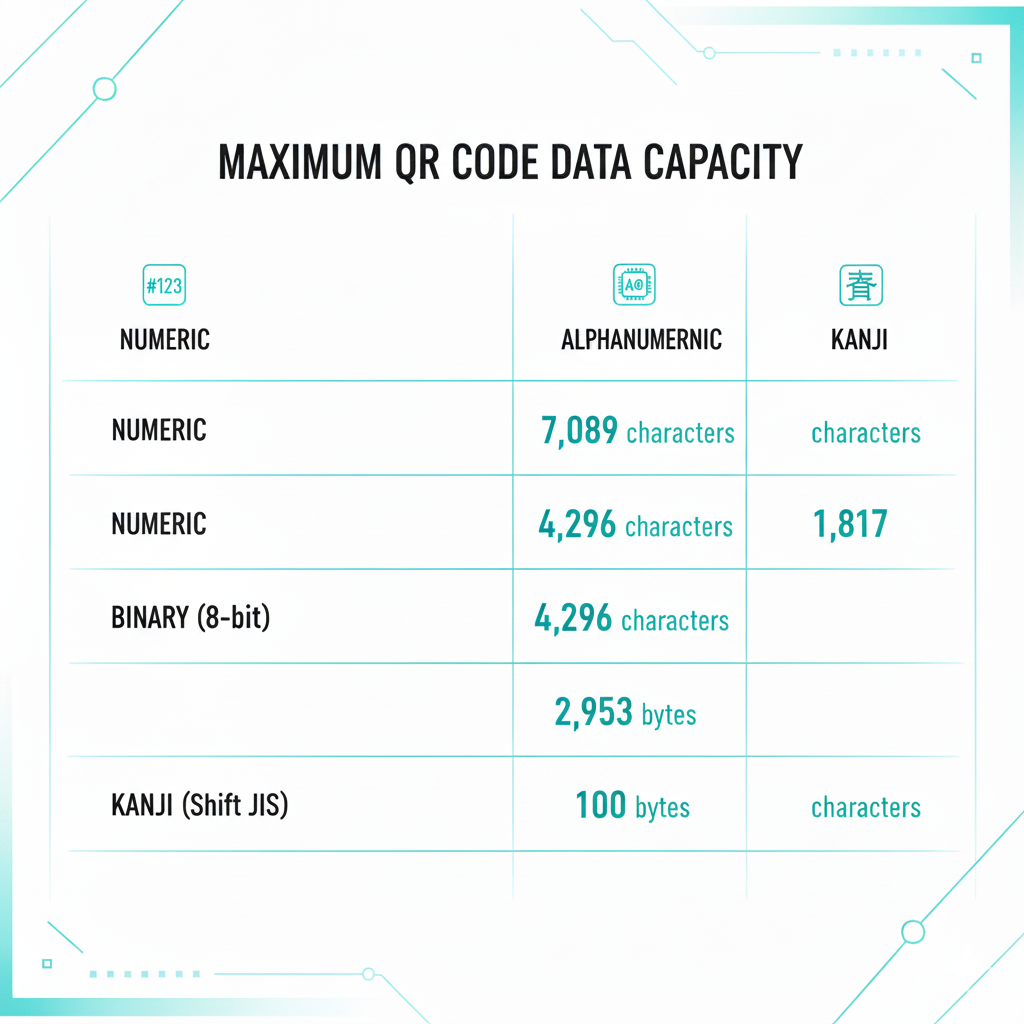How Much Data Can a QR Code Hold? (Real-World Guide)
QR codes are the universal bridge between physical and digital worlds. A common technical question is: how much data can a QR code actually hold? It depends on the version, the error correction level, and the data type. Below we cover limits, practical examples, and best practices to balance capacity with scan reliability.Short links + Dynamic QR = more scans, better analytics
Use VISU to shorten, track, and reward every scan. Fewer bytes in the code, more outcomes in the real world.
Understanding QR Code Versions

- Version 1: 21×21 modules (smallest)
- Version 40: 177×177 modules (largest)
Data Types That Affect Capacity

- Numeric (0–9): highest capacity
- Alphanumeric (A–Z, 0–9, basic symbols): medium
- Binary/Byte (any 8-bit char, incl. UTF-8): lower
- Kanji/Kana: efficient for double-byte characters
Go dynamic: update targets without reprinting
Create dynamic QRs with UTMs, goals, and rewards. Test faster and avoid oversized, hard-to-scan codes.
Error Correction Levels (ECC)
- L (7% recovery) — maximum capacity
- M (15%) — balanced (often ideal)
- Q (25%) — safer, less capacity
- H (30%) — toughest, least capacity
Maximum Data Capacity (V40 + Low ECC, ideal)
| Data Type | Maximum Capacity |
|---|---|
| Numeric | 7,089 characters |
| Alphanumeric | 4,296 characters |
| Binary (8-bit) | 2,953 bytes |
| Kanji | 1,817 characters |
Practical Scenarios
- URLs: ~<100 characters for cleaner codes
- vCard: up to ~3 KB (test devices)
- Payments (PIX/UPI): usually < 500 chars
- Wi-Fi: typically 100–300 chars
- Long text: link to hosted content
Why Bigger Isn’t Always Better
- denser and harder to scan
- require larger print areas
- worse on older/low-quality cameras
Optimization Tips

- Use short links on your own domain
- Host large files; don’t embed
- ECC M or Q for most cases
- Test across devices and distances
Reward scans. Track outcomes. Scale campaigns.
Activate QR Ads with instant rewards ($VISU), UTMs, and real-time reports to prove ROI.
Conclusion
QR codes can store a surprising amount of data, but practical usage is about efficiency and scannability. For marketing, payments, and logistics, keep codes short and dynamic — you’ll scan more, break less, and iterate faster.FAQ: QR Code Capacity & Scannability
What’s a safe real-world URL length?
Keep URLs under ~100 characters. Use your own short domain and compact UTMs to avoid dense codes.
Which ECC level should I choose?
M for balance; Q if there’s likely wear/obstruction; H only when strictly necessary.
What are the top-end capacities?
At V40 + low ECC: ~7,089 numeric, 4,296 alphanumeric, 2,953 bytes, or 1,817 Kanji. In production, use less for speed and reliability.
Static vs dynamic QR — which is better?
Dynamic for campaigns: update destinations without reprinting, add UTMs/goals, run A/B tests, and reward scans.
Why do dense codes fail on some phones?
High data density shrinks modules, making focus/decoding harder in low light, at distance, or on older cameras.
How big should I print a QR?
Around 2×2″ (5×5 cm) minimum for posters, with high contrast and a proper quiet zone.

